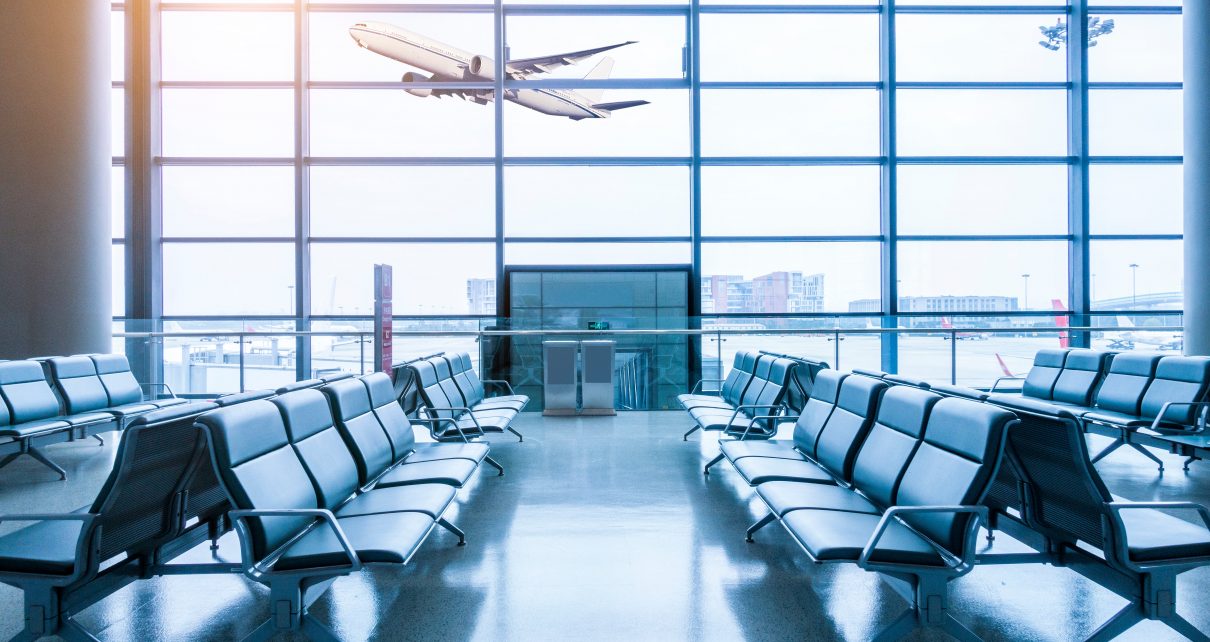When Allison Vanore stepped onto a plane last week, she was shocked to find scores of empty seats.
Vanore, a 37-year-old television producer, had an entire row to herself on the United Airlines flight last Thursday from Newark to Los Angeles. Out of roughly 200 seats, only 20 or 30 were filled.
“It felt completely empty. Everyone could spread out as much as they wanted to,” she said in a phone interview. “It was a weird experience. And I’m sure it wasn’t environmentally friendly.”
Near-empty planes have become a common sight for Americans who risk flying during the novel coronavirus pandemic, even as millions of others stay home and shun travel.
Aviation experts even have given this phenomenon an eerie name: “ghost flights.” And as Vanore suspected, they’re bad news for the planet.
“The environmental consequences of running these flights that are mostly empty are very large,” said Annie Petsonk, international counsel at the Environmental Defense Fund.
Petsonk explained that flying remains one of the most carbon-intensive forms of travel. When a plane is full, each passenger is responsible for a smaller share of the total carbon emissions. But when a plane is nearly empty, each passenger is responsible for a much larger amount of planet-warming pollution.
There are several reasons that airlines have continued to operate ghost flights during the pandemic, according to Petsonk and other clean aviation experts.
A big factor is the federal government.
Under the terms of the $2.2 trillion coronavirus relief package passed by Congress last month, the Department of Transportation forced airlines that receive aid to continue providing a minimum number of flights to destinations they served before the pandemic.
In some cases, the DOT requirements have compelled airlines to keep flying to destinations that have seen precipitous drops in passengers.
Approximately 92,859 passengers passed through TSA checkpoints Tuesday, compared with 2,227,475 passengers the same day last year, marking a dramatic 96% drop, according to TSA data.
But spurred by the DOT requirements, airlines only have reduced the number of flights available in the United States by 58% compared with the same period last year, according to the global travel data provider OAG.
“It looks like the Department of Transportation requirements are overly strict. It is a government policy that seems to be keeping more planes in the air and increasing emissions,” said Dan Rutherford, program director for marine and aviation at the International Council on Clean Transportation.
To be sure, the DOT requirements aren’t the only factor motivating airlines to keep ghost flights in the skies, Rutherford said. Another reason is competition.
“If and when demand picks back up, some airlines want to be the first company that can pick up those customers,” he said. “They want to be ahead of the curve when people start flying again.”
In addition, it can be difficult and expensive for airlines to store planes that are out of service, he added.
Crunching the numbers
To attempt to quantify the climate impact of ghost flights, E&E News relied on a flight emissions calculator developed by the U.N. International Civil Aviation Organization, a specialized agency of the United Nations.
The calculator allows users to input several pieces of information about a flight, including the origin, destination, number of passengers and cabin class.
Using the information provided by Vanore, E&E News estimated that each passenger on her flight was responsible for 636 pounds of carbon dioxide entering the atmosphere.
Despite the climate consequences, Vanore defended her flight as necessary. She said she traveled to New Jersey to care for family members, including her mother, who was recently diagnosed with cancer.
Diane Nigg, the owner of the travel firm Adventures for Alaskans, said she was in a similar situation last month. She felt compelled to fly from Anchorage, Alaska, to the District of Columbia to care for her son, who had recently moved and had expressed concerns about his mental health.
“My son had recently relocated to Washington, D.C., and he asked me for assistance,” Nigg said. “He’s never asked me for help like that. So I thought I would help him. He was sort of unsettled.”
On her journey home, Nigg said there were six people on her Alaska Airlines flight to Anchorage, which had a layover in Los Angeles. According to the flight emissions calculator, each passenger on that flight was responsible for emitting 1,213 pounds of CO2.
What made an impression on Nigg was the emptiness, not the emissions. “It was really like a ghost flight,” she said. “It was just dead. Really there wasn’t anybody on board. And I felt sorry for the crew. There was a full crew, and there were hardly any passengers.”
Craig Cherney, an attorney at Canterbury Law Group, said he flew from Phoenix to Seattle on April 11 for business purposes. He estimated there were 15 people on the flight.
According to the flight emissions calculator, each person on that flight was responsible for emitting 349.3 pounds of CO2. Asked about this environmental impact, Cherney shrugged it off, noting that the dearth of passengers made his travel experience much more pleasant and efficient.
“Getting through security literally took 40 seconds,” he said. “It was almost like the dream of flying in America.”
Good news on the horizon
There are some signs that ghost flights are on the decline — good news for clean aviation experts and others concerned about their carbon footprint.
The clues can be traced to two recent developments.
First, DOT last week began granting exemptions to the minimum service requirements. The agency on Friday largely granted requests for exemptions by Hawaiian Airlines, Delta Air Lines and Alaska Airlines.
Hawaiian Airlines had asked DOT for permission to suspend flights to Hawaii, which has imposed a mandatory 14-day quarantine for all arriving visitors. Delta had asked the agency for permission to delay the start of its summer schedule.
Previously, DOT had denied requests for exemptions by Spirit Airlines and JetBlue. But on Friday, the agency appeared to acknowledge that airlines face challenges in continuing service to certain destinations, with demand much lower than last year.
“It is not reasonable or practicable for Delta to commence its seasonal summer 2019 baseline schedule immediately,” DOT wrote in its decision regarding Delta.
At least one lawmaker has pressed DOT to grant additional requests for exemptions. House Transportation and Infrastructure Chairman Peter DeFazio (D-Ore.), who was spotted on a near-empty flight back to D.C. to vote on the $2.2 trillion Coronavirus Aid, Relief and Economic Security Act last month, said the department should take action to prevent ghost flights when possible.
“It makes no sense for empty planes to keep flying around the country, putting the safety of flight crews at risk and emitting greenhouse gases into the atmosphere,” DeFazio said in an email to E&E News. “That’s why I’m pushing DOT to take a holistic, system-wide view of all service exemption requests and consider them together so that the Department does not unintentionally require redundant and unnecessary air service.”
He added: “Unprecedented times require DOT to think creatively to ensure we don’t cut off communities that depend on reliable air service and cargo shipments, while also avoiding the very real problem of mandating empty planes keep flying around the country.”
Asked for comment, DOT spokeswoman Caitlin Harvey said in an email that the department “continues to review additional requests for exemption” on a case-by-case basis.
In a second recent development, several airlines have started transitioning from carrying passengers to carrying cargo, including medical supplies such as COVID-19 testing kits and personal protective equipment (PPE).
Last month, for instance, American Airlines began operating a cargo-only flight full of medical supplies and packages between Dallas and Frankfurt, Germany. It was American’s first cargo-only flight since 1984, when the airline retired the last of its Boeing 747 freighters.
Meanwhile, United Airlines has started operating more than 150 cargo-only flights per week between its six U.S. hubs and 13 cities worldwide. The flights are carrying “vital shipments such as medical supplies, kits and PPE,” a United spokeswoman said in an email.
Rutherford, of the International Council on Clean Transportation, said the cargo-only flights are a vast improvement over ghost flights from an emissions standpoint.
“What matters is how full the flight is,” he said. “So if cargo is moved from a near-empty passenger flight to a full cargo-only flight, that would have the effect of reducing emissions. And that would be a win for the environment.”
Reprinted from Climatewire with permission from E&E News. E&E provides daily coverage of essential energy and environmental news at www.eenews.net.




